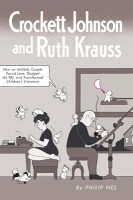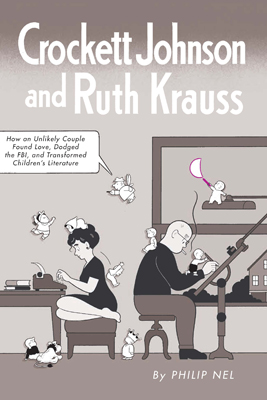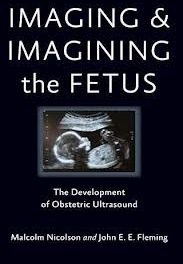 Author: Philip Nel
Author: Philip Nel
Publisher: University Press of Mississippi
Book Review by Nano Khilnani
The subjects of this work, the husband-and-wife team of cartoon creators Crockett Johnson and Ruth Krauss, produced 75 books between themselves, many of which became classics in children’s literature. Johnson, born in 1906 and Krauss, born in 1901, were married in 1939. They spent 36 years together until Crockett passed away in 1975.
It’s not just the quantity of work in literature that matters of course; it is also its popularity and circulation. On that point, the most well-known comic strip of Johnson, Barnaby, developed in 1942, was, at its peak, syndicated in 64 newspapers with a combined circulation of more than 5.5 million readers!
Among children’s books enthusiasts, Crockett Johnson is best known for his Harold and the Purple Crayon series. Created in 1955, this book is about a curious four-year-old boy named Harold, who, with his crayon, draws just about anything he wants and makes his imagination a reality.
Yes, Harold, the boy in a white (and sometimes blue) romper, has the power to create a world of his own simply by drawing it with his purple crayon. A Wikipedia article points this out about Harold: If he wants to go for a walk in the moonlight, but there is no moon, he simply draws one. If he has nowhere to walk, he draws a path. He has many adventures looking for his room, and in the end he draws his own house and bed and goes to sleep there.
Five of the seven books in the Harold and the Purple Crayon series have remained in print for more than 50 years. He was so popular that in an episode of the TV cartoon The Simpsons, Harold is asked by Homer: “Draw me some beer.”
The main message that the Harold book series conveys to us is that our minds can create our own world for us and for others, and the only limitation we have is the capacity of our imagination. You may have read Napoleon Hill’s statement: “whatever the mind can conceive, it can achieve.”
The author of this book Phil Nel describes Crockett Johnson’s idea about what Harold is, or should be: “His Harold lives in the existential uncertainty of the blank canvas. There is no world except that which he makes. A small god in a white romper, Harold uses art to create the heavens and the earth, dragons and apple trees, tall buildings and nine kinds of apple pie.”
Ruth Krauss authored many books, the most popular of which was The Carrot Seed. She also wrote ‘theatrical poems’ which I may want to actually see (?). She and Crockett Johnson collaborated on an unknown number of books. But for sure, besides The Carrot Seed, they worked together on: How to Make an Earthquake, Is This You? and The Happy Egg.
Ruth Krauss was described as ‘a giant’ in the world of children’s literature by the famed writer and illustrator of children’s books Maurice Sendak
Even as the contributions of the Johnson-Krauss duo to children’s literature in America are large and significant, there is not much biographical material about them. This book by Philip Nel fills that void.
Philip Nel is director of the Program in Children’s Literature in Kansas State University, and teaches courses there on children’s and young adult literature. Among his other books are: Dr. Seuss: American Icon; J.K. Rowlings’ Harry Potter Novels: A Reader’s Guide; Keywords for Children’s Literature (co-edited with Lisa Paul); Tales for Little Rebels: A Collection of Children’s Literature (co-edited with Julia Mickenberg); and The Annotated Cat: Under the Hats of Seuss and His Cats.







